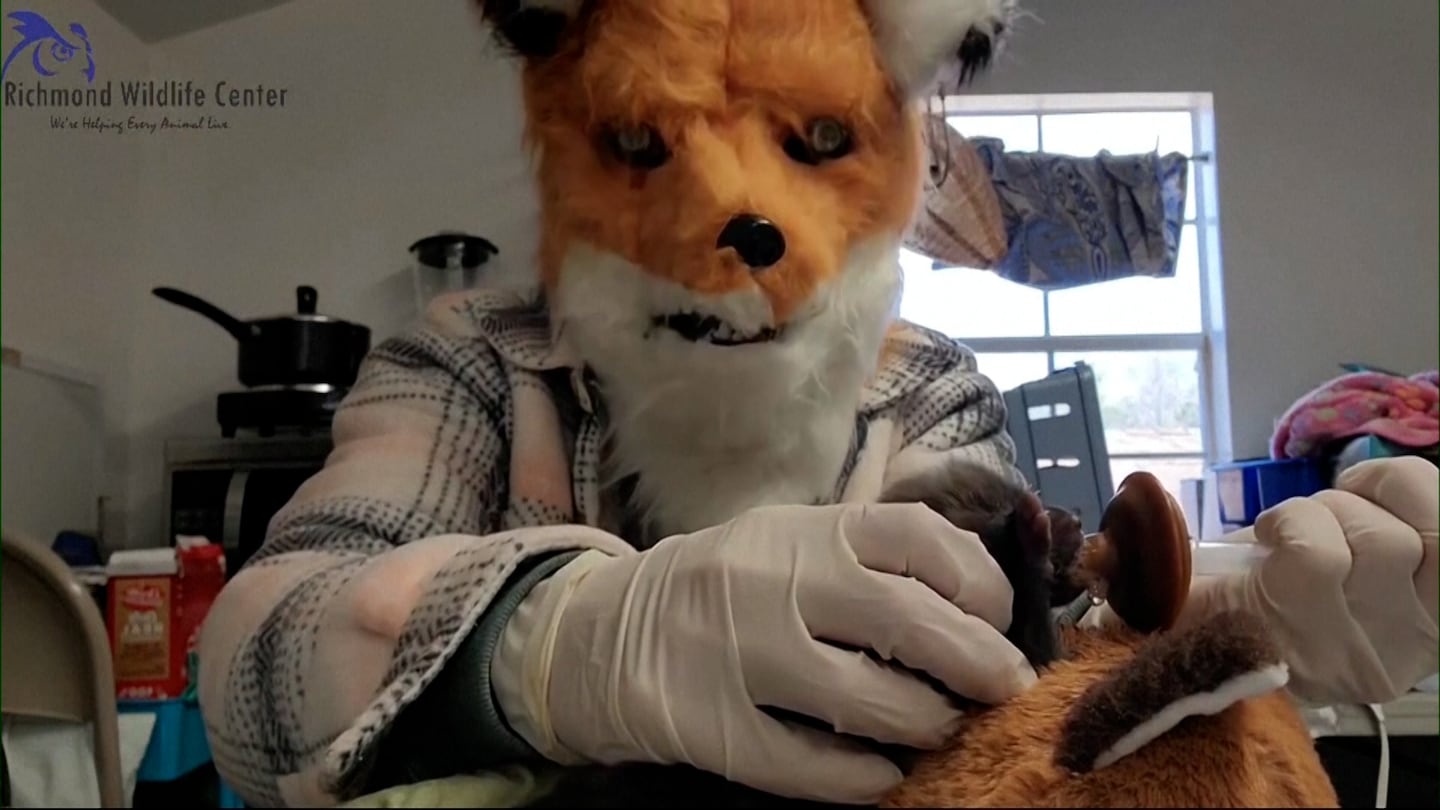
A newborn fox recently delivered to a wildlife center could see an unusual sight when she grows old enough to open her eyes: a human caregiver dressed as a fox.
Staff at the Richmond Wildlife Center in Virginia adopted the strategy as part of an effort to prevent the animal from over-associating with humans, the center said in a Facebook post on Tuesday. A video showed a staff member bottle-feeding the tiny creature, while wearing gloves and a red, furry, pointed mask to cover their human face.
“It’s important to make sure that the orphans that are raised in captivity do not become imprinted upon or habituated to humans,” the post said, adding that the mask meant “she doesn’t see a human face when feeding.”
“This is critically important if we are going to get her wild,” it said. Other precautions include minimizing human sounds and handling, and providing the kit with a snuggly toy fox to mimic the sensation of her mother.
The video recalls viral footage of keepers at the Wolong National Nature Reserve in China, who dressed in full-body panda suits while interacting with cubs.
Kai Williams, director of the International Wildlife Rehabilitation Council, said she hadn’t heard of humans dressing up as foxes to care for them before. She said the technique was more common in caring for birds, which rely more on their sight than mammals, which are more dependent on scent.
“Something you’d see much more is somebody dressing up in a whole crane suit or a brolga — something like that,” she said.
“Sometimes they’ll just dress up in a covering that hides their shape a little bit, so they don’t quite look like a human, they look like a weird mass,” Williams added. “Or they’ll use a hand puppet.”
The purpose is not to inhibit a wild animal’s “healthy fear” of humans — an essential survival trait — by causing them to associate humans with food or nurturing.
She said she hadn’t seen studies that supported the effectiveness of the technique with foxes, but “I appreciate the idea.”
The best thing to do when coming across an injured or otherwise vulnerable-looking animal in the wild is to use an app called Animal Help Now, Williams suggested, which helps users in the United States find the closest rehabilitation center and provides location-specific resources.
The Richmond Wildlife Center received the fox when she was believed to be barely 1 day old, with her umbilical stump still attached, the center said in a previous post. “She weighs just 80 grams, her teeth are not in, her eyes are sealed, and she is deaf at this age,” it said.
It hopes to place the baby with other rescued foxes of a similar age at other wildlife centers and to eventually release her into the wild if given the all-clear by health authorities.
